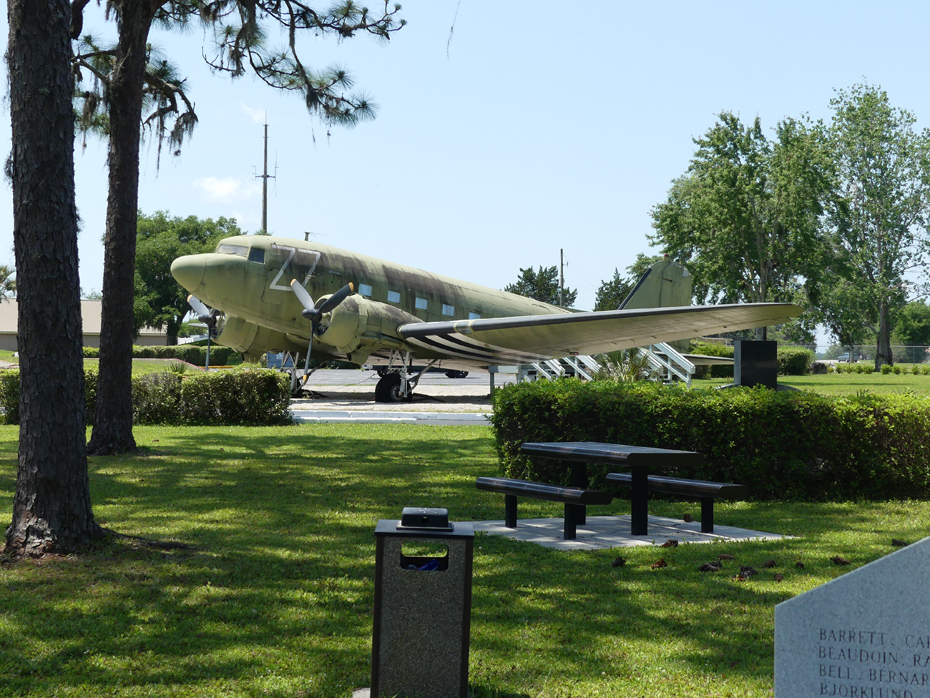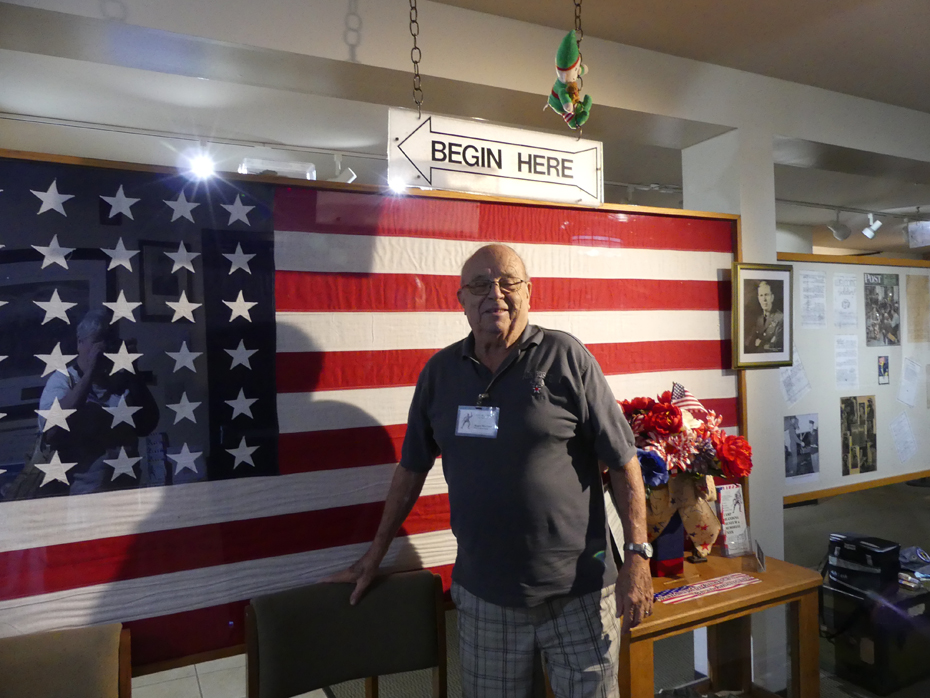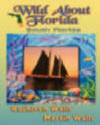
|
|
|
|
|
|
|
|
|

Sometimes hidden treasures are right in your face. Like many others, I took home county sites for granted. Sure, I live just a few miles from Camp Blanding and can hear the booms of drills often. Camp Blanding began in 1939 as a Florida National Guard training site and remains that today. What I wasn't thinking about was the Camp Blanding Museum telling its history. I can't believe I never visited before. After all, during WWII, this was the fourth largest city in Florida. Wow! What a little gem.
A former barracks dating back to WWII houses the museum, but before you enter, the outdoor exhibits in its Memorial Park will amaze you. If you start your tour to the rear of the museum, one of the first monuments you see is the Liberty Road Borne. It's a small monument only 48 inches high and 24 inches at its base and tapering to a round dome at the top, but its significance is enormous.
Shortly after the war, France wanted to create a lasting memorial to the commemorate American First and Third Armies that liberated France starting on D Day. They felt such a heroic action deserved more than just one monument. Instead, they installed 1146 symbolic milestones, called Bornes, marking every kilometer of the road, now known as"Liberty Road," taken by General Bradley's First Army, and General Patton's Third Army as they marched into France. The symbolism of the Bornes is traditional, the red flaming torch of the Statue of Liberty above an ocean, representing the Atlantic Ocean over which the American Armies came to France. Circling the dome on a blue field, there are 48 stars, the number on the American Flag during WWII, to commemorate the men from every state of our great nation who fought to liberate France. As traffic increased along Liberty Road, it became necessary to remove four of the Bourns. The fourth and final Borne, #35 from the highway #174 between Utah Beach and Saint Lo at St. Jean-de-Daye, the very first town liberated by the 30th Infantry Division, France donated to the Camp Blanding Museum in honor of the many men whose units trained here. If that doesn't give you a patriotic thrill, nothing will.
Walk down a brick path and you see a monument with the names of the men who trained at Camp Blanding who received the Medal of Honor, the country's highest award.
All around the rest of the museum, you will see the guns, tanks, planes, helicopters, and ambulances that helped win WWII. On the front side of the park, there is a monument dedicated to all the men who served from WWI through Desert Storm. There are more weapons, some from newer wars, even an Air Force jet.
Inside, a living treasure, Roger MacEwen a retired Air Force veteran, greeted me and guided me through the museum. The video gives a lot of the base history included its namesake, Albert H. Blanding, who was commissioned in the Florida National Guard in 1899, and was a Major General and Chief of the National Guard Bureau in 1939 when the camp opened. The film goes from the immense task of building a huge military facility in such a short time. When war began in 1941, the population of the camp boomed. When it became a German prisoner of war camp along with a training camp, the captured soldiers added their touch to the history. Rupert Menzroth, once a prisoner there and now an American citizen, told how the prisoners got paid 80 cents a day,"Good pay. I could go to the canteen and buy a bottle of beer for 10 cents." The prisoners worked in motor pools, the bakery, and picking produce for local farmers. He's now an American citizen and brought his wife and one of his sons to walk in his footsteps while he was a prisoner here. After the video brings me up to speed on the history, Roger led me through the actual exhibits. He is of an age where this is memory, not just history.
We began at an American Flag at the front of the museum. It had the 48 stars of the flag when Camp Blanding began and throughout WWII. A history lesson for the many young people who think our flag was always the one you see today.
An exhibit that points out how fast our
technology moves is one of Albert H. Blanding's
artifacts and medals. It includes a sword he would have used
when he was fighting against Pancho Villa in the Mexican War,
as well as a semi-automatic pistol from WWII.
There's a diorama of the POW camp. Hanging on the wall next to the exhibit are sketches by former POW, Rupert Menzroth, that he did from memory and donated to the museum.
A life-sized exhibit shows how the average enlisted man at Camp Blanding lived. A small room with two bunks and a tiny table where he could have played cards or read a magazine in his free time was all the private space he had.
Next to that was an exhibit about mortars or land mines. It showed the different types, and how a soldier would search for the explosive devices.
Another exhibit shows a military EMT administering an IV to a wounded soldier. Army medics treated over 14 million wounded often under the most primitive conditions. Since this was pre-penicillin, sulfa was the main anti-infection treatment. In the early years before they developed a sulfa tablet, the powder got poured on the wound to help prevent infections. Morphine powder eased the most severe pain and stabilized a wounded soldier so he could be moved to a hospital.
Women's contribution to the war effort is recognized there in a section called Women at War. Women served in women's corps, and as a civilian worker at Camp Blanding. One of the biggest contributions was women moving into what had been considered"men's jobs" such as welding and shipbuilding. A large Rosie the Riveter poster is the centerpiece of the exhibit. Women movie stars did their part entertaining soldiers at the front and as pin-ups, posing in bathing suits or other, at that time, sexy clothing for posters to place at places the men were stationed. Roger told an interesting story about one of the pin-ups. Betty Grable was the favorite star, and the men at one air base had a poster of her on the wall. When they had to fly on a dangerous mission, as they left, each man patted her butt. Eventually, the poster showed a dark smudge because of all the hands patting. There is a picture of the poster complete with smudge in the museum.
There is a section about how civilians could help the war effort. Another story Roger told is a reminder we should never forget history. He said a family with a little boy. While the dad was in the restroom, the boy and mom were looking at a poster that said"Buy War Bonds." The child asked,"What are war bonds?" The mom didn't know and when the dad came out the restroom, he admitted,"I don't know."
One thing I learned there was from an exhibit that had a few pages from the Times Union, a Jacksonville paper. It didn't date back to the war years, but was dated May 8, 2010. I'm somewhat of a history buff. (If you read many of my stories, you figured that out already.) However, I had never heard about this. Sure, I knew all about the Japanese Internment Camps, but I chalked it up to the usual racial discrimination. I had never heard in either high school or college history classes that we interred German Americans too. This paper stated that 190 German civilians snatched from Central America were held prisoner there in stockade 2. A few were Nazi infiltrators, but some were Jews who had fled the Nazis. When I checked some sources on line, I found that this had really happened. Not only at Camp Blanding, but, at bases in North Dakota, Tennessee, Oklahoma, and Texas. Under something The Alien Enemies Act, the United States detained at least 11,000 German nationals. The reason for having the Central American countries arrest and send them to the U.S. was fear they were planning to sabotage the Panama Canal. This museum may be small but it holds a wealth of history. It's well worth a visit.
We'd love your comments!
|
American Roads
and
| ||||||||||||||||||||||||||||||||||||||||||||
|
Public Disclosure--
Please Read The FTC has a law requiring web sites to let their readers know if any of the stories are "sponsored" or compensated. We also are to let readers know if any of our links are ads. Most are not. They are just a way to direct you to more information about the article where the link is placed. We also have several ads on our pages. They are clearly marked as ads. I think readers are smart enough to know an ad when they see one but to obey the letter of the law, I am putting this statement here to make sure everyone understands. American Roads and Global Highways may contain affiliate links or ads. Further, as their bios show, most of the feature writers are professional travel writers. As such we are frequently invited on press trips, also called fam trips. On these trips most of our lodging, dining, admissions fees and often plane fare are covered by the city or firm hosting the trip. It is an opportunity to visit places we might not otherwise be able to visit. However, no one tells us what to write about those places. All opinions are 100% those of the author of that feature column. . |
|||||||||||||||||||||||||||||||||||||||||||||
|
Privacy Policy/ Archives /
Contributors /
Subscribe to
American Roads Books by
Kathleen Walls /
Contact /
Sponsor or Advertise/ American Roads & Global Highways Home Page
|
|||||||||||||||||||||||||||||||||||||||||||||































